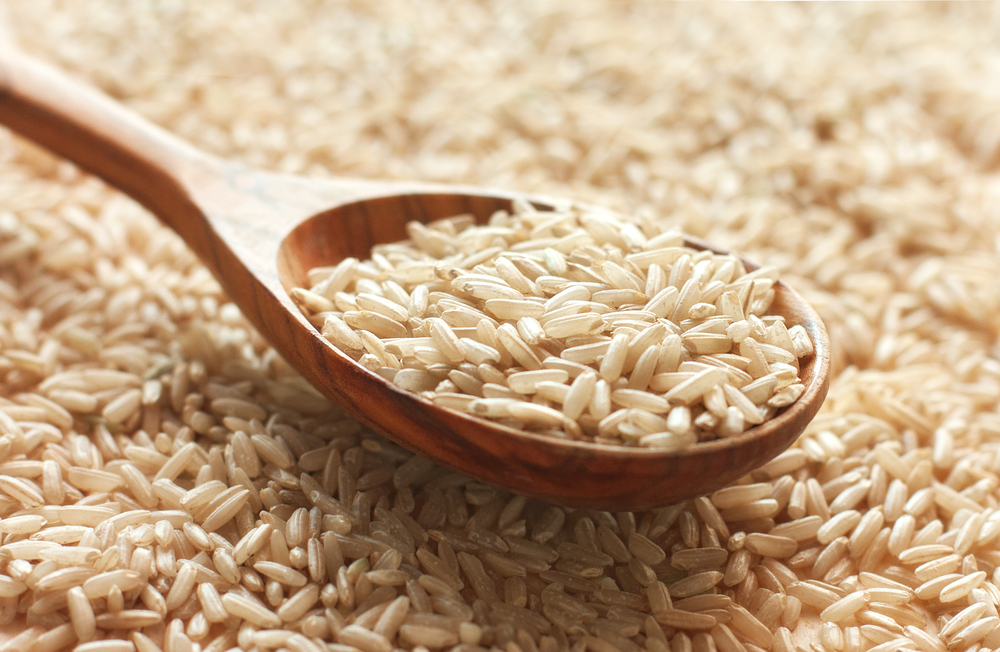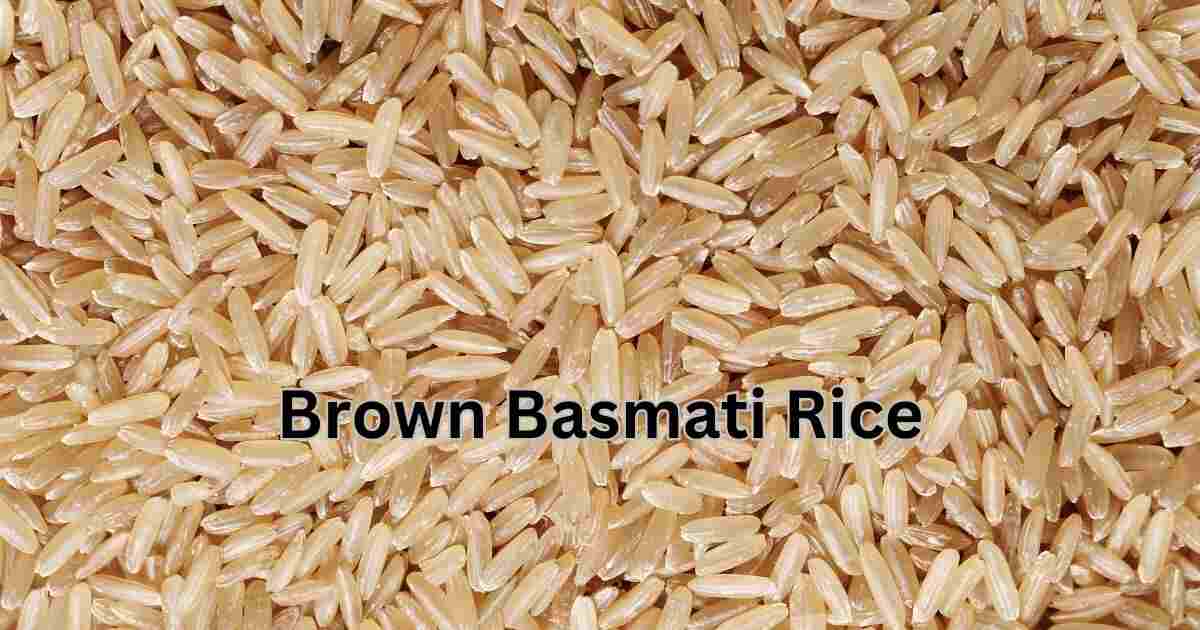Brown basmati rice is a highly nutritious option with a low glycemic index. It is high in fiber, minerals, and vitamins, making it an excellent choice for a healthy diet.
Brown basmati rice is a type of long-grain rice that has grown in popularity due to its numerous health benefits. It is packed with essential nutrients such as manganese, copper, and vitamin b, which are crucial for the body’s healthy functioning.
Additionally, it is an excellent source of fiber, making it great for digestive health. One of the main advantages of brown basmati rice is that it is low on the glycemic index, meaning it controls blood sugar levels better than other types of rice. Its nutty flavor and aroma make it a delicious and healthy option for any meal.

Credit: www.livescience.com
Unlock The Health Benefits Of Brown Basmati Rice Nutrition On Your Diet
Brown basmati rice is known for its earthy aroma and nutty flavor and is a preferred choice of many who aim to eat healthily. Now that people are becoming aware of their diets, they are looking for more nutritious and wholesome grains.
Brown basmati rice has got it all – it is loaded with fiber, vitamins, and minerals, making it an excellent choice for health enthusiasts.
The Nutritional Value Of Brown Basmati Rice
Brown basmati rice is known for its high nutritional value. The name “basmati” means “full of fragrance” in hindi, and rightly so, as it is rich in several essential nutrients. Here are some of the nutritional benefits of brown basmati rice:
- One cup of cooked brown basmati contains around 216 calories, 45 grams of carbs, 4 grams of protein, and 1 gram of fat, making it an ideal choice for weight-watchers.
- Brown basmati rice is a rich source of fiber, which helps to reduce the risk of heart disease and lowers cholesterol levels.
- It is loaded with essential minerals like magnesium, potassium, and phosphorus, which are necessary for maintaining healthy bones and muscles.
- Brown basmati rice has a low glycemic index, which helps to regulate blood sugar levels.
How Brown Basmati Compares To Other Types Of Rice
Brown basmati rice falls under the category of long-grain rice and is relatively healthier than other varieties of rice. Here’s how brown basmati rice compares to other common types of rice:
- White rice has a significant portion of the bran and germ removed during processing, which makes it less nutritious than brown basmati rice.
- Jasmine rice is also a type of long-grain rice, but it has a higher glycemic index than brown basmati rice, which means it can spike blood sugar levels.
- Wild rice is loaded with nutrients, but it is not technically a type of rice. However, it can be an excellent alternative to brown basmati rice, considering its high nutritional value.
Incorporating Brown Basmati Into Your Diet
Are you wondering how to include brown basmati rice in your diet? Here are some ideas:
- Use it as a side dish with some grilled vegetables, meat or tofu.
- Make a healthy stir-fry by tossing some chopped vegetables and cooked brown basmati rice into a wok with some oil and your favorite seasonings.
- Whip up a delicious salad by tossing cooked brown basmati rice with some chopped vegetables and your favorite dressing.
- Use brown rice in place of white rice in all your favorite recipes, like biryanis, pulao, and fried rice.
Brown basmati rice is a healthy and nutritious addition to any diet. It is packed with essential nutrients and has several health benefits. By incorporating it into your meals, you can enjoy the taste and reap the benefits of this wholesome grain.
Brown Rice Vs. White Rice: Understanding The Differences
The Nutritional Differences Between Brown Basmati And White Rice
Brown basmati rice and white rice come from the same grain, but they differ significantly in their nutritional properties. When the hulls of the grain are removed, white rice is produced, while brown rice retains the hull and germ. Here are some key nutritional differences between the two:
- Brown rice is a whole grain, which means it contains all three parts of the kernel, including the nutrient-rich bran and germ. White rice, on the other hand, has been stripped of these components during processing.
- Brown rice is higher in fiber than white rice. One cup of cooked brown rice has 3.5 grams of fiber, while the same amount of white rice has just 0.6 grams of fiber.
- Brown rice has a lower glycemic index than white rice, which means it does not spike blood sugar levels as much as white rice does. This makes it a better choice for people with diabetes or those trying to manage blood sugar levels.
How The Processing Of Rice Affects Its Nutritional Value
As mentioned, the difference between brown and white rice lies in the way they are processed. White rice undergoes milling, where the layers of bran and germ are removed, leaving only the endosperm. Unfortunately, this process also removes most of the vitamins and minerals present in the grain.
Brown rice, on the other hand, retains all of these components thanks to its minimal processing.
Benefits Of Choosing Brown Basmati Over White Rice
There are numerous benefits to switching from white rice to brown basmati rice. Here are a few:
- Brown basmati contains more vitamins and minerals than white rice. It is an excellent source of magnesium, phosphorus, and vitamin b6, which are vital for maintaining good health.
- Choosing brown basmati rice over white rice can help manage blood sugar levels and reduce the risk of developing type 2 diabetes.
- Brown basmati rice is high in fiber, which aids digestion and helps keep you feeling full for longer.
- The added nutritional value of brown basmati rice means you may not need to eat as much of it to feel satisfied.
Brown basmati rice is a much healthier choice than white rice due to its higher fiber and nutritional content. Make the switch to brown rice today and start enjoying the health benefits!
Basmati Rice And Its Impact On Your Health
Have you considered adding basmati rice to your daily diet? This delicious and nutritious food is a fantastic source of fiber, protein, and essential nutrients, but that’s not all. Brown basmati rice can also have a significant impact on your overall health.
Here’s how:
Improving Digestion And Aiding Weight Loss
- Brown basmati is a great source of fiber, which can help improve digestion and prevent constipation.
- The fiber in brown basmati rice also helps you feel full for longer periods, which can aid in weight loss efforts.
- Additionally, the low glycemic index of brown basmati rice means that it can help regulate blood sugar and insulin levels, making it a great choice for individuals with diabetes.
Regulating Blood Sugar Levels
- The fiber in brown basmati rice slows down the absorption of glucose in the bloodstream, which helps regulate blood sugar levels.
- This steady and sustained release of glucose throughout the day can help prevent sugar crashes and reduce the risk of developing type 2 diabetes.
Reducing The Risk Of Chronic Diseases Such As Heart Disease And Cancer
- The fiber in brown basmati rice can help reduce cholesterol and blood pressure levels, which lowers the risk of heart disease.
- Brown basmati rice is also rich in antioxidants, such as lignans, which have been shown to reduce the risk of cancer and prevent the growth of cancer cells.
So, there you have it. If you’re looking for a healthy and delicious addition to your diet, brown basmati rice is the way to go. Its impact on your overall health is significant and has been seen in many scientific studies.
So, add some brown basmati rice to your meal today and start reaping the benefits!
Cooking With Basmati Rice
Best Practices For Cooking Brown Basmati
Cooking brown basmati rice can be a tricky process, as the grain is denser than its white counterpart. However, with the right techniques, you can create fluffy, aromatic brown basmati rice that your taste buds will love. Below are some best practices for cooking brown basmati rice:
- Rinse the rice before cooking, removing excess starch and debris.
- Use a 1: 2 ratio of rice to water when cooking. For example, one cup of rice would require two cups of water.
- Soak the rice for at least 30 minutes before cooking. Soaking enhances the texture and makes it easier for the rice to cook evenly.
- Use a pot with a tight-fitting lid and bring the water to a boil over high heat. Once boiling, reduce the heat to low and let the rice simmer for 40-45 minutes.
- Do not lift the lid during the simmering process, as it can cause the steam to escape and negatively affect the texture of the rice.
Tasty And Healthy Recipes Using Brown Basmati
Brown basmati rice is a staple in indian cuisine, but it can also be used in many other dishes. Not only is it more nutritious than white rice, but it adds a nutty, rich flavor to any dish. Here are some delicious, healthy recipes using brown basmati rice:
- Brown basmati rice pilaf: Sauté onions, garlic, and your preferred veggies in a pan. Add brown basmati rice and vegetable broth, bringing it to a boil, then simmering for around 40 minutes until the liquid is absorbed. Fluff the rice with a fork and top with fresh herbs and nuts.
- Brown basmati rice salad: In a large bowl, mix cooked brown basmati rice, cherry tomatoes, diced cucumbers, bell peppers, and feta cheese. Drizzle with olive oil and lemon juice for a light and refreshing lunch.
- Brown basmati rice stir-fry: Cook chopped veggies (broccoli, carrots, bell peppers, etc.) In a wok with garlic and ginger. Add cooked brown basmati rice and your choice of protein (tofu, shrimp, chicken, or beef). Drizzle with low-sodium soy sauce and serve hot.
Pairing Brown Rice With Other Healthy Foods
Brown rice is a versatile ingredient that pairs well with many other healthy foods. Here are some ideas for creating a balanced, nutritious meal using brown basmati rice:
- Pair with steamed broccoli and grilled chicken for a high-protein, low-fat meal.
- Mix in spinach and chickpeas for an iron- and protein-rich vegetarian dish.
- Top with grilled salmon and avocado for a heart-healthy omega-3 boosted meal.
- Serve alongside roasted sweet potatoes and roasted brussels sprouts for a fiber-packed meal.
Frequently Asked Questions For Brown Basmati Rice Nutrition
Is Brown Rice Better Than White Rice?
Yes, this basmati rice is considered better than white rice as it contains more fiber, vitamins, and minerals. Brown rice is less processed than white rice, and retains the bran and germ layers, which gives it a nuttier flavor and chewy texture.
How Many Calories Are In A Serving Of Brown Rice?
A quarter cup of uncooked brown rice has approximately 170 calories. Keep in mind that the serving size is small, so if you’re planning on consuming more than a quarter cup, the calorie count will increase.
Is Brown Rice Gluten-Free?
Yes, this rice is gluten-free. It is a great option for those who have celiac disease or gluten intolerance. It can be substituted for wheat and other gluten-containing grains in many recipes, making it versatile in cooking and baking.
Conclusion
Brown rice is a healthier alternative to white rice with its numerous health benefits. It is high in fiber, protein, and essential vitamins and minerals that contribute to better health. The low glycemic index of brown basmati rice helps control blood sugar levels, making it an excellent choice for people with diabetes and those who want to lose weight.
Its nutty flavor and versatile cooking options make it an ideal ingredient in many dishes, from salads to desserts. With its impressive nutritional profile, it is a great staple food in a well-balanced diet. So, if you’re looking to improve your health and diet, consider switching to brown basmati rice.
Its nutritional benefits, combined with its delicious taste, make it a perfect food for the health-conscious.




